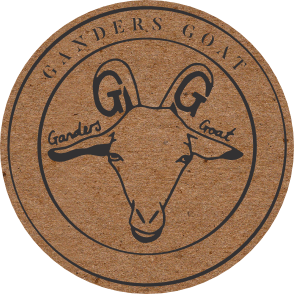
Our ethos has always been one of environmental sustainability, but what does that actually mean? Who is accountable? How do we meet targets?
Silver winner of National Green Business of the year, we still needed to do more! A chance to inspire, a chance to make a difference.
For us it quite literally starts at grass roots, in the fields we own and rent, soil health is fundamental to the quality of every product we make. Get the soil right you get the feed right, get the feed right you get a quality final product! That’s all well and good but it shouldn’t all be about the products, we are on this planet for a very small moment in time and it is our responsibility to look after it.
What does it mean for our farm to be green?
Scratch below the surface and you will find a soil that is teaming with worms, bugs and bacteria, all balanced to process nutrients to help the grass grow. However they do far more than that! The biological fauna actually locks up carbon, the better soil health the more it locks up. Recent testing has shown that just the top 10cm of soil on our owned fields sequested the equivalent of 230 tons of CO2 in just 12 months and it can store even more!
Above ground the low intensity managed grassland mowed once a year and only grazed for part of the year, is surrounded by sustainably managed hedges that are home to a plethora of bug species and farmland birds along with larger mammals like foxes, badgers, and deer.
Ok but who is accountable?
Simply put we are! We are actively publishing our reports and studies both good and bad and with our environmental policy, you can then decide if we are doing enough! The most recent set of reports commissioned by us at the farm showed that on the surface the company was indeed excellent in most environmental terms:
- Compostable packaging
- Plastic free products
- Green delivery packaging
- Low food miles
BUT! In terms of CO2 our goal was net zero and here it became obvious we were falling short, not a surprise technolgy isnt quite there yet to achieve this but we can get very close quite quickly with a tough stratergy!
As a business we are now carbon neutral at worse and carbon positive at best, testing is still on going to show the trend data. Our biggest issue is Goats are ruminants and as such create a gas called methane. Methane is at least 32 times worse than CO2 as a green house gas goes. So how do we improve? Well for a start let’s look at a term I have seen a LOT! In fact I just used it, “Carbon Neutral” What most companies do is effectively buy their way out, using “Carbon Credits” basically going to a company and getting them to plant trees to offset their Carbon emissions. In doing my research like a ferret in a rabbit hole I discovered several short falls with this option:
- Most of the companies sell off set credits do so to a standardised and certified standard, all very good until you find that they themselves created the standard and self certify under it.
- One credit=One Ton of Carbon= X number of trees planted. I used X as this varies from one to fifteen trees. But trees grow slowly and for “one” tree to sequester a ton of carbon can take 60 years of more yet we produce the emissions now!
- Are the trees protected forever? what if the forest is cut down in 70 years? Has the offset of carbon ever actually existed?
- Many of the Off Set forests are planted in monoculture lots with little or no biodiversity or habitat creation often in third world countries sometimes even destroying one ecosystem to create.
So how are we doing it differently? How do we meet our targets?
- Tree planting on the farm, planted to create biodiverse and wildlife food rich habitat.
- Reducing energy use through purchasing efficient machinery.
- Installing green energies like solar.
- Improving soil health further to sequester more carbon
Using these changes we have achieved carbon neutrality with a new goal of Net Zero by 2030, this is achievable but we would like to be 90% there by the end of 2022.
